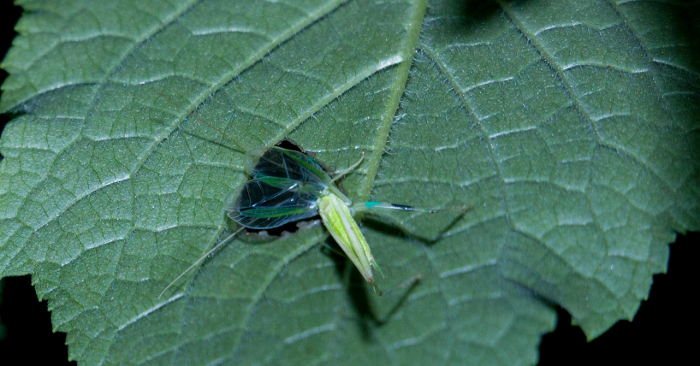Baffling Crickets
Wed, 2020-12-16 15:49
Smaller and Quieter Tree crickets make Leaf Amplifiers to Trump the Competition for Females
The melodious, soothing chirps of tree crickets are a familiar sound at dusk around the world. They are the mating calls by which male tree crickets try and attract females towards themselves from a distance. The louder a cricket calls, the more likely he is to attract females, and the larger he is, the longer she will mate with him, increasing his chances of paternity. Smaller males, and those who cannot be as loud, are at a disadvantage....losers in the game? Not really, since they have some interesting tricks that they can choose to play!
In a recently published article, Rittik Deb, Sambita Modak and Rohini Balakrishnan from the Centre for Ecological Sciences at the Indian Institute of Science have revealed some interesting strategies that less preferred tree cricket males use to overcome being less attractive. Smaller males and those with less loud calls are more likely to construct a baffle, an acoustic amplifier that these tree crickets make by chewing a hole in a large leaf and calling through it. Baffling can make their calls 2-3 times as loud, effectively drowning out the competition from non-baffling neighbours and attracting more females. Interestingly, being louder also causes females to mate with smaller males for longer than usual. So making these acoustic amplifiers gives them a two-fold advantage: attracting more females and getting them to mate with them for longer.
Then why don't larger and louder males also make baffles and become even louder? The explanation could be that larger and louder males are already attracting as many females as they can mate with on a night, so they don't gain as much by putting in the extra effort of constructing this tool. After all, life is about weighing costs and benefits, even for little tree crickets!
Important links:
Paper: Deb R., Modak S., Balakrishnan R. 2020. Baffling: a condition-dependent alternative mate attraction strategy using self-made tools in tree crickets. Proceedings of the Royal Society B 287: 20202229.
https://doi.org/10.1098/rspb.2020.2229
Media coverage: https://www.nytimes.com/2020/12/15/science/tree-crickets-chirps.html

Add new comment